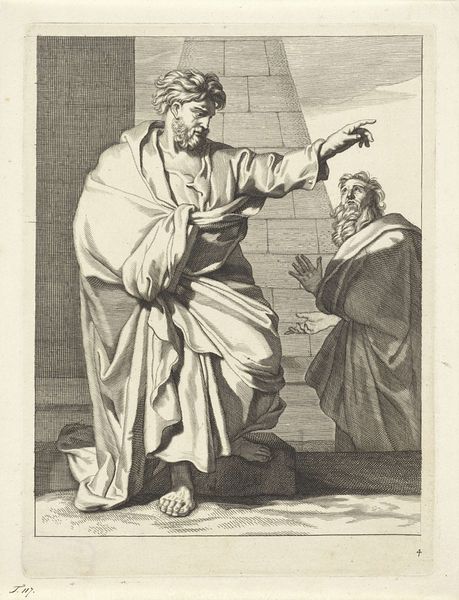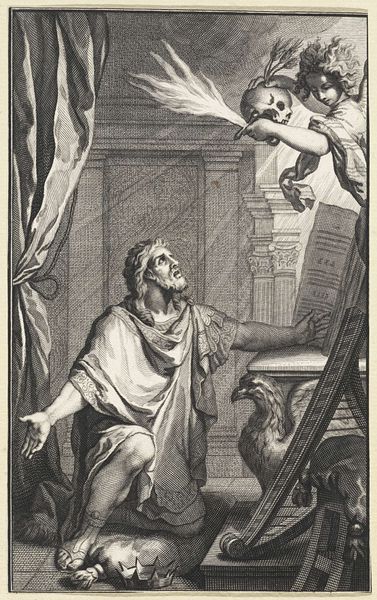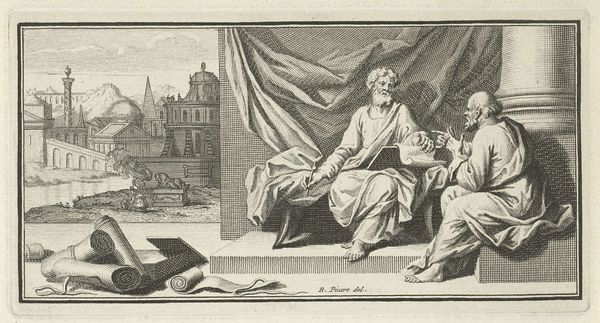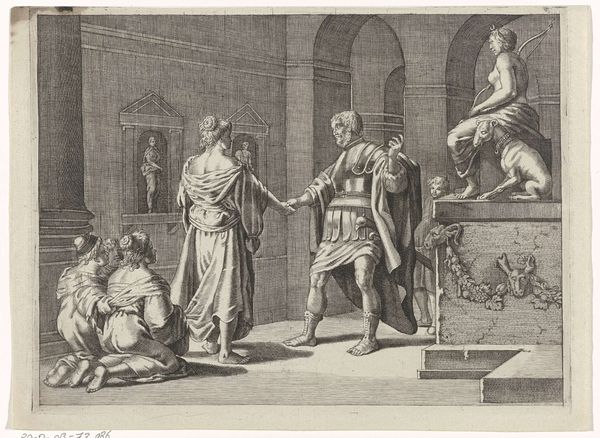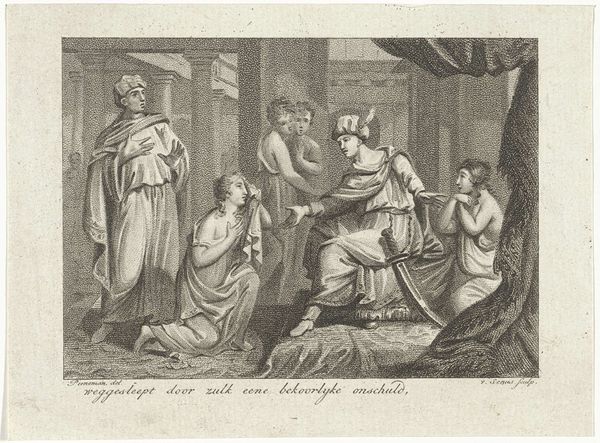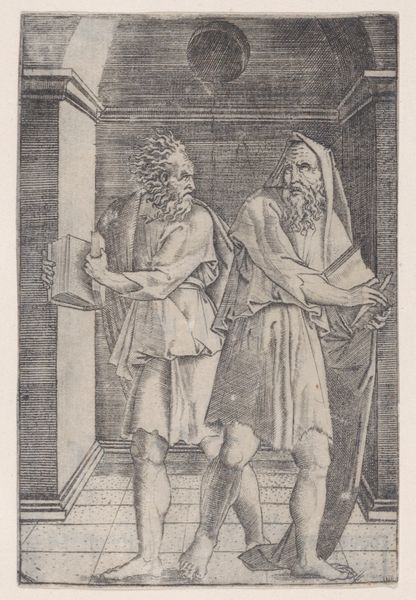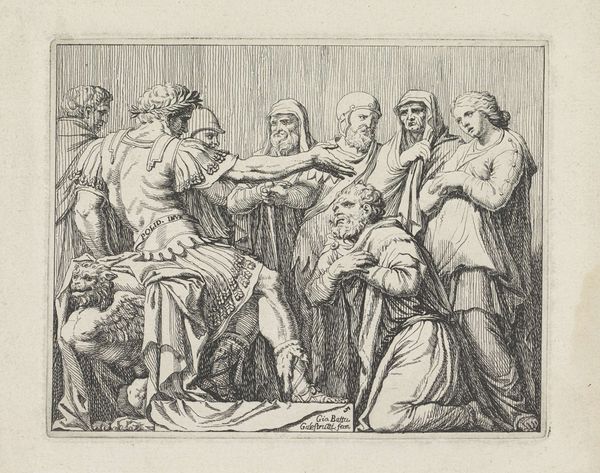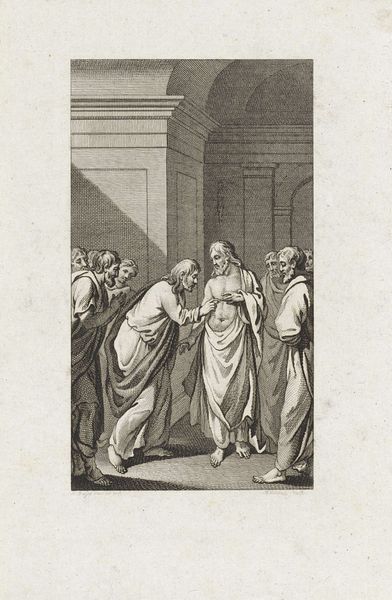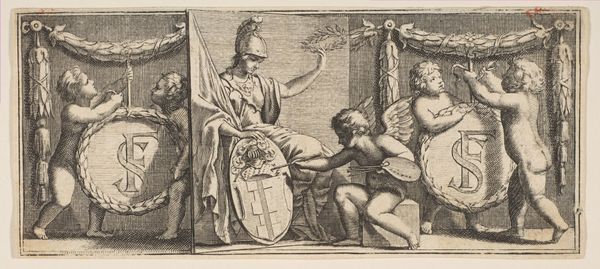
print, engraving
#
portrait
#
narrative-art
#
baroque
# print
#
old engraving style
#
traditional media
#
caricature
#
figuration
#
history-painting
#
engraving
Dimensions: height 91 mm, width 172 mm
Copyright: Rijks Museum: Open Domain
Curator: What an intriguing image—this is "Lucas schrijft zijn evangelie," or "Luke Writing His Gospel," an engraving made in 1709 by Bernard Picart. I am immediately struck by the starkness, its formal rigor. The figures are arranged with such deliberate clarity. Editor: The weight of tradition and labor— I see a print, mass produced to communicate not just scripture but power. Look at Luke there, hunched over his writing, it speaks volumes about the conditions of intellectual labor even within religious narratives. Curator: Indeed, notice how Picart has rendered the figures, the lines creating volume and depth with stark contrasts. The play of light and shadow directs our eye, underscoring the symbolic importance of Luke and his act of writing. Observe the positioning of his hand with the writing tool – a classical study. Editor: And look closely—that scroll, the discarded pages, they are all material traces of the process. The actual production of text isn't some ethereal act. Consider too the labor involved in creating the printing plates themselves—who were these craftsmen? What were their working conditions? Curator: An excellent point about craftsmanship, however the beauty of Picart's technique is not purely functional. The engraving is not just a reproduction tool but an aesthetic object. Each line, each curve, functions within a carefully constructed visual scheme, guiding our perception of the narrative. Editor: The setting –the window opens to the sea implying trade networks, colonialism, these ideas disseminate just as much as theology does, thanks to printing presses. Luke’s gospel isn’t isolated, and is inextricably tied to economic realities of his era. Curator: You present a valuable social context. And I concur: the power dynamic created between text and material. It all starts with an idea, of course, as an intellectual formulation, as the artist clearly visualizes the Gospel. This vision solidifies, transforms into symbol via medium and composition for us to decipher now centuries later. Editor: Absolutely. By focusing on how this image was made, distributed and received in the culture of the time opens doors for interpreting its message beyond the merely sacred or religious, to examine more thoroughly the meaning behind labor as its own kind of spiritual offering. Curator: Yes. Both material means of its creation and its intrinsic composition offer valuable lenses through which we can reflect upon both art and historical record, in the end. Editor: I leave now having a refreshed look at a traditional religious scene. Thank you, friend.
Comments
No comments
Be the first to comment and join the conversation on the ultimate creative platform.

